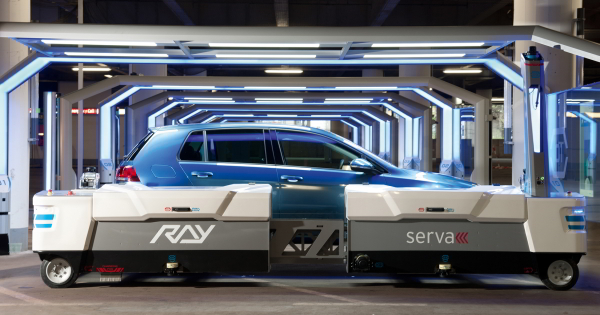Drivers are familiar with winding around annoying curves in the parking garage until finally sighting an open spot.
If the driver has a plane or train to catch, this can be stressful. Serva Transport Systems, a company based in Germany, recognized this problem and developed a special parking robot that parks, sorts and picks up cars autonomously.
“We park for you!” That’s how easy it is to sum up the concept developed by Serva Transport Systems for parking in the future. But even though this simple idea presents huge challenges in terms of the design and operation of transport systems, intelligent sensors can be used to solve the problem.
The system from Serva Transport Systems arranges cars in the most space-efficient manner possible. The automobiles are taken to a specific spot in the garage, from which they are then later returned. Drivers no longer need to search for a parking spot, since the system takes care of it for them. If the Serva concept is applied, the only thing the driver needs to do is park the car in the transfer station and get out!
Parking robot with sensor intelligence
The central element of the system is the parking robot “Ray”, which is an automated guided vehicle (AGV). This robot is a type of forklift for cars and features four fully movable and independently powered wheels. The parking robot lifts the car up, moves it to the designated spot and also brings it back again. It is the key to the “parking revolution” conceived by Serva Transport Systems. However, the robot would not be complete without a few sensor-related capabilities.
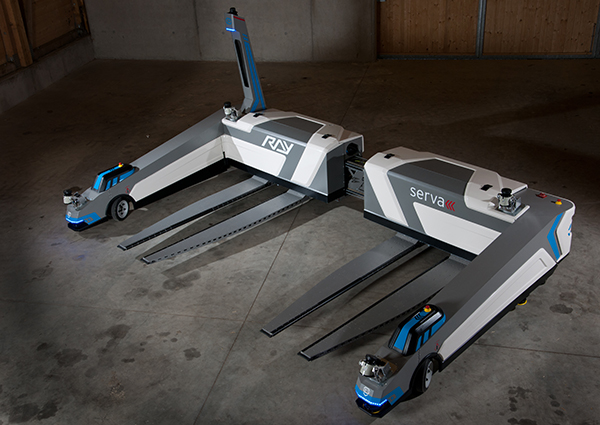
Measuring and identifying with LMS
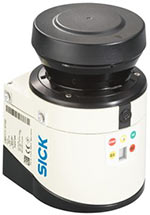 Multiple LMS100 laser scanners from SICK measure the car that is to be parked and then send the captured data to the system’s software. This data is used to identify and classify the car and its dimensions, and also to measure its wheelbases and wheel diameters. This allows the parking robot to know to automatically adapt to the particular car. Incredibly precise data is required so that the system can identify the right car, and so that it can park it in the most space-efficient manner possible. In addition, a laser scanner performs monitoring to make sure there are no protruding parts, which could otherwise be damaged.
Multiple LMS100 laser scanners from SICK measure the car that is to be parked and then send the captured data to the system’s software. This data is used to identify and classify the car and its dimensions, and also to measure its wheelbases and wheel diameters. This allows the parking robot to know to automatically adapt to the particular car. Incredibly precise data is required so that the system can identify the right car, and so that it can park it in the most space-efficient manner possible. In addition, a laser scanner performs monitoring to make sure there are no protruding parts, which could otherwise be damaged.
Knowing the right path
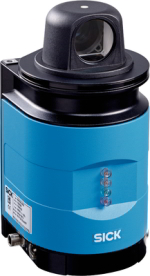 The robot, which moves autonomously across the parking area, uses the NAV350 navigation scanner for orientation. The navigation scanner leads the AGV along the guide track and localizes its exact position. The scanner provides precise spatial contour and reflector data, which are outputted via an Ethernet interface. A specially developed navigation control system has the capability to accurately position the parking robot within a few millimeters. In order to save as much space and time as possible, the parking robot can even rotate in position. These are complex movement sequences to which the sensors must adapt.
The robot, which moves autonomously across the parking area, uses the NAV350 navigation scanner for orientation. The navigation scanner leads the AGV along the guide track and localizes its exact position. The scanner provides precise spatial contour and reflector data, which are outputted via an Ethernet interface. A specially developed navigation control system has the capability to accurately position the parking robot within a few millimeters. In order to save as much space and time as possible, the parking robot can even rotate in position. These are complex movement sequences to which the sensors must adapt.
Protection with safety laser scanners
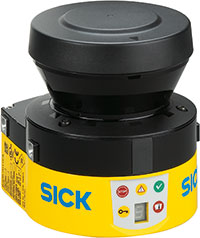 The S3000 Expert and S300 Mini Remote safety laser scanners ensure that the parking robot is truly safe. The necessary protective fields surrounding the parking robot are monitored to avoid collisions and protect pedestrians. This is an incredibly demanding task for the sensor. Not only do the protective fields need to be adapted to the changing, car specific dimensions of the parking robot, they must also dynamically adjust to altered movement directions and speeds, since the robot can move in all directions. This results in an extremely high number of possible evaluation cases. Parking from the future: A parking robot picks up a car from the transfer station and brings it to the designated spot – autonomously.
The S3000 Expert and S300 Mini Remote safety laser scanners ensure that the parking robot is truly safe. The necessary protective fields surrounding the parking robot are monitored to avoid collisions and protect pedestrians. This is an incredibly demanding task for the sensor. Not only do the protective fields need to be adapted to the changing, car specific dimensions of the parking robot, they must also dynamically adjust to altered movement directions and speeds, since the robot can move in all directions. This results in an extremely high number of possible evaluation cases. Parking from the future: A parking robot picks up a car from the transfer station and brings it to the designated spot – autonomously.
Well-connected sensors
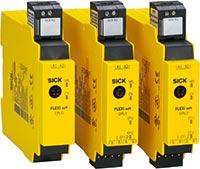 All of the parking robot’s sensors are optimally connected and coordinated with one another via controllers. Here, integrated safety is provided by two Flexi Soft safety controllers, which directly communicate with the laser scanners via a safe bus connection to protect all paths of movement. The control principle can be considered the core of the parking robot’s sensor equipment. SICK was actively involved in the development process from the very beginning. As the design was put into practice, the SICK sales team’s application specialists and project management implemented numerous expansions and optimizations with Serva Transport Systems, such as integrating the Flexi Soft safety controllers with EtherCAT gateways and coupling the controllers together.
All of the parking robot’s sensors are optimally connected and coordinated with one another via controllers. Here, integrated safety is provided by two Flexi Soft safety controllers, which directly communicate with the laser scanners via a safe bus connection to protect all paths of movement. The control principle can be considered the core of the parking robot’s sensor equipment. SICK was actively involved in the development process from the very beginning. As the design was put into practice, the SICK sales team’s application specialists and project management implemented numerous expansions and optimizations with Serva Transport Systems, such as integrating the Flexi Soft safety controllers with EtherCAT gateways and coupling the controllers together.


